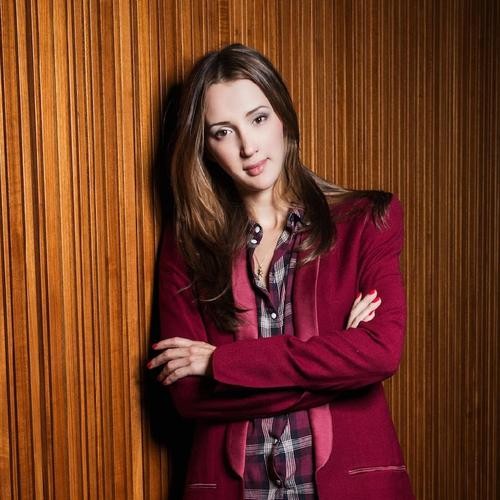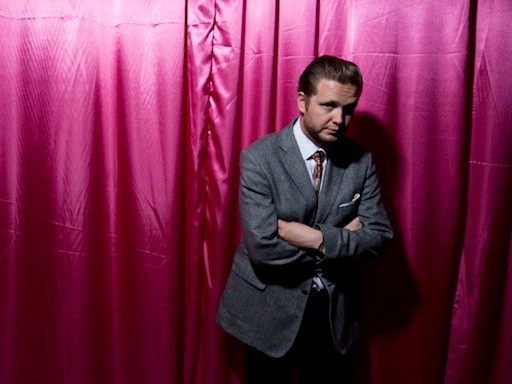"Whither goest thou, America, in thy shiny car in the night?" JackKerouac first asked that in On the Road in 1957, and now, for the Armory Show's new "Focus: USA" section, the curator and Warhol Museum director Eric Shiner has taken this question, reframed it, and posed it directly to the American art world. The result is a special exhibition—timed to the centennial of the original 1913 Armory Show, which revolutionized American art—that brings together curated displays of artists from 17 galleries around the country, from Los Angeles's indie Various Small Fires to the blue-chip behemoth Gagosian.
The resulting assortment hints at the diversity of artistic approaches being employed by cutting-edge across the country, but a number of marked commonalties exhibited by the work suggests trends—the closest thing it seems we have to movements these days—in the making. The artists range from Dave Cole at Dodge Gallery, whose work deals with flags and American symbols, to others like Taraves Stachan, a Bahamian artist based in New York who will be representing the Bahamas in the upcoming Venice Biennale. What can be gleaned from "Focus: USA" about the state of avant-garde art in the United States today? To find out, Artspace editor-in-chief Andrew M. Goldstein spoke to Shiner about the thinking behind his show, how he found the artists he included, and how Warhol remains relevant to American art.
EXPLORE WORK FROM THE WARHOL MUSEUM AT RIGHT
In the past the Armory Focus section has looked abroad to spotlight emerging art regions like Berlin and, last year, the Nordic countries. What led you to choose the United States, hardly an unknown, for this year's Focus?
The Armory Show team actually decided to take a look at contemporary art in the United States one hundred years after the first Armory, so the idea wasn’t mine originally, but I certainly ran with it once I decided to take on the show.
The original Armory Show exhibition famously brought the seeds of European avant-garde art to American shores, inspiring successive generation of artists who eventually seized the status of art-world capital away from Paris, bringing it to New York. In recent decades, however, the rising tide of globalization has eroded New York's position as the most important art city—not to mention America's status as the leader of avant-garde art, though American art still unquestionably dominates the international market. What are you thoughts on this situation as it relates to your Focus show?
This is all very true, as there are now numerous hubs of art production located in all corners of the globe, each a contender in the quest to be known as the art capital of the world—even though I think it is much better to have many centers that are amazing, as it keeps things much more interesting. I didn’t address this topic directly in my section, but I did make sure to include artists from around the world—some who live here in the States and others who don’t—so that we could look at the concept of “America” from a variety of geographic and philosophical positions.
You have said that you set out to "gauge the pulse of contemporary art production in America today." What did you find? How is the patient doing?
It is alive and well, thriving and pulsing. I have always known that the arts are thriving not only in L.A. and New York but in many hubs across the nation, and it was incredibly inspiring for me to see the amazing work of artists coming from not only major cities, but from the countryside and lots of off-the-beaten path sites as well. I don’t think this is anything new, but I’m glad that it continues to be the case.
How did you put together the show?
I started off by determining which artists I wanted to include in the show, and I then approached their galleries to see if they would like to participate. I was able to secure about 80 percent of my top choices in the first round, and then went back to the drawing board on the last two or three spaces available. In the end, I was able to assemble a group of artists whose voices I feel need to be heard, many of whom are making their Armory Show debut in the section.
What are a few of the emergent trends that you saw while traveling the country to assemble this show?
There is definitely a large DIY aesthetic that shapes work being made all around the country. I also noticed that there are many hubs of like-minded artists in various cities thanks to the art schools and facilities peculiar to those places, for example glass in Seattle and Tacoma and ceramics in Kansas City, although of course artists in those places are working across all media. But it was interesting to see contemporary practice playing out in these media, and I was able to find some truly amazing work going on in all corners of the country.
One surprise you included in the show is a booth containing a miniature retrospective of Warhol's work, organized by Gagosian Gallery. As the director of the Warhol Museum you obviously have a soft spot for the Pop artist, but beyond that what led you to include the booth?
I definitely have a soft spot for Warhol’s work, but I still remain critically distanced from it, as I feel I need to be able to look at Warhol on all fronts—the good, the bad and the ugly—in order to properly address his legacy and his life. That being said, I felt that it was critical to include him in the show, as his ghost, his voice, and his visual lexicon pop up everywhere I go, on every studio visit and in every conversation I have about art these days. Artists are ultimately the ones that confirm my suspicions that Andy was an influencer on their work in one way or another, so that’s why I decided that Andy had to be a part of the mix regardless.
Much has been made of the way that Warhol has influenced contemporary artists, and an exhibition on the topic, "Regarding Warhol: Sixty Artists, Fifty Years," is on view at your museum now. To ask a divergent question, what are some ways that the artists you have featured have pushed beyond Warhol's influence, creating work that is radically new in its own right?
By their very nature, artists ultimately take an extant idea and transform it into their own vocabulary and imagery. That so many artists have riffed on Warhol is definitely a fact, but it is very important to say that each one of the works in "Regarding Warhol" may find its base in Warhol, but so too have they moved well beyond him in the formation of a singular and unique voice.
Aside from Warhol's inclusion, are there any other curveballs that viewers can expect in your show?
Lots. But I’m not giving them away just yet.
The art world is always characterized by a multitude of approaches to making art, but at any given point certain commonalities surface, such as the Pop art made in the '60s. If you had to forecast the way that American art will trend over the next decade, what are some directions you see it going?
I hope that it continues to stand as the voice for those that don’t have it, that it continues to spark positive social change, and that it always keeps us on edge, slightly uncomfortable, and always intrigued. That’s what I see happening today, and I hope that it continues on in this vein for the foreseeable future.



























